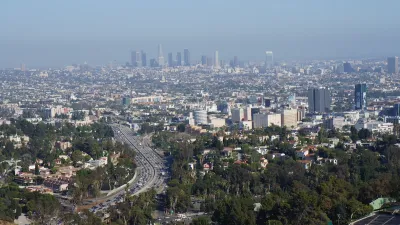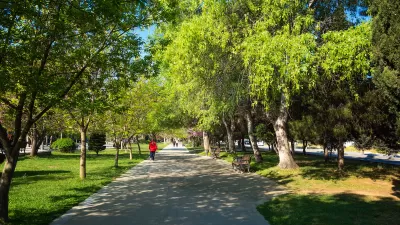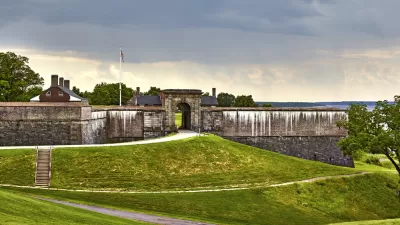A USC study finds that Los Angeles’ urban trees absorb more carbon than expected, but while they provide crucial environmental benefits, they cannot replace the urgent need for systemic emissions reductions.

A groundbreaking study from USC Dornsife College has found that trees in central Los Angeles absorb significantly more carbon dioxide than previously estimated, offsetting up to 60 percent of daytime fossil fuel emissions in the warmer months and about 30 percent annually. Using an innovative network of high-resolution CO2 sensors called the Carbon Census array, researchers tracked emissions in real time, providing one of the most detailed measurements of how urban greenery impacts air quality. Unlike traditional models that estimate CO2 levels indirectly, this study measured carbon emissions directly over an 18-month period, yielding a more precise understanding of how vegetation interacts with urban pollution.
One of the most surprising findings was that trees absorbed the most carbon dioxide during summer, despite the season’s dryness. Researchers attribute this resilience to irrigation, groundwater access from leaky infrastructure, and drought-resistant tree species. However, while urban trees play a critical role in improving air quality, they cannot fully offset emissions from cars, buildings, and industry. CO2 levels still spiked during rush hours, reinforcing the need for broader systemic changes. The study supports the USC Urban Trees Initiative, which seeks to expand greenery in communities most in need, using data-driven insights to guide tree planting efforts where carbon absorption is highest.
Looking ahead, researchers are expanding the sensor network to cover more areas of Los Angeles, helping to define baseline CO2 levels and identify regions where vegetation can make the biggest impact. While urban trees provide a natural boost to carbon reduction, lead researcher Will Berelson emphasizes that they are not a substitute for larger climate solutions. “Nature is helping us, but we can't rely on it to do all the work," he said, underscoring the need for clean energy, better public transit, and broader emissions reductions to meet the city’s goal of carbon neutrality by 2050.
FULL STORY: L.A.'s urban trees absorb more carbon than expected, study finds

Planetizen Federal Action Tracker
A weekly monitor of how Trump’s orders and actions are impacting planners and planning in America.

Congressman Proposes Bill to Rename DC Metro “Trump Train”
The Make Autorail Great Again Act would withhold federal funding to the system until the Washington Metropolitan Area Transit Authority (WMATA), rebrands as the Washington Metropolitan Authority for Greater Access (WMAGA).

The Simple Legislative Tool Transforming Vacant Downtowns
In California, Michigan and Georgia, an easy win is bringing dollars — and delight — back to city centers.

The States Losing Rural Delivery Rooms at an Alarming Pace
In some states, as few as 9% of rural hospitals still deliver babies. As a result, rising pre-term births, no adequate pre-term care and harrowing close calls are a growing reality.

The Small South Asian Republic Going all in on EVs
Thanks to one simple policy change less than five years ago, 65% of new cars in this Himalayan country are now electric.

DC Backpedals on Bike Lane Protection, Swaps Barriers for Paint
Citing aesthetic concerns, the city is removing the concrete barriers and flexposts that once separated Arizona Avenue cyclists from motor vehicles.
Urban Design for Planners 1: Software Tools
This six-course series explores essential urban design concepts using open source software and equips planners with the tools they need to participate fully in the urban design process.
Planning for Universal Design
Learn the tools for implementing Universal Design in planning regulations.
Smith Gee Studio
City of Charlotte
City of Camden Redevelopment Agency
City of Astoria
Transportation Research & Education Center (TREC) at Portland State University
US High Speed Rail Association
City of Camden Redevelopment Agency
Municipality of Princeton (NJ)





























